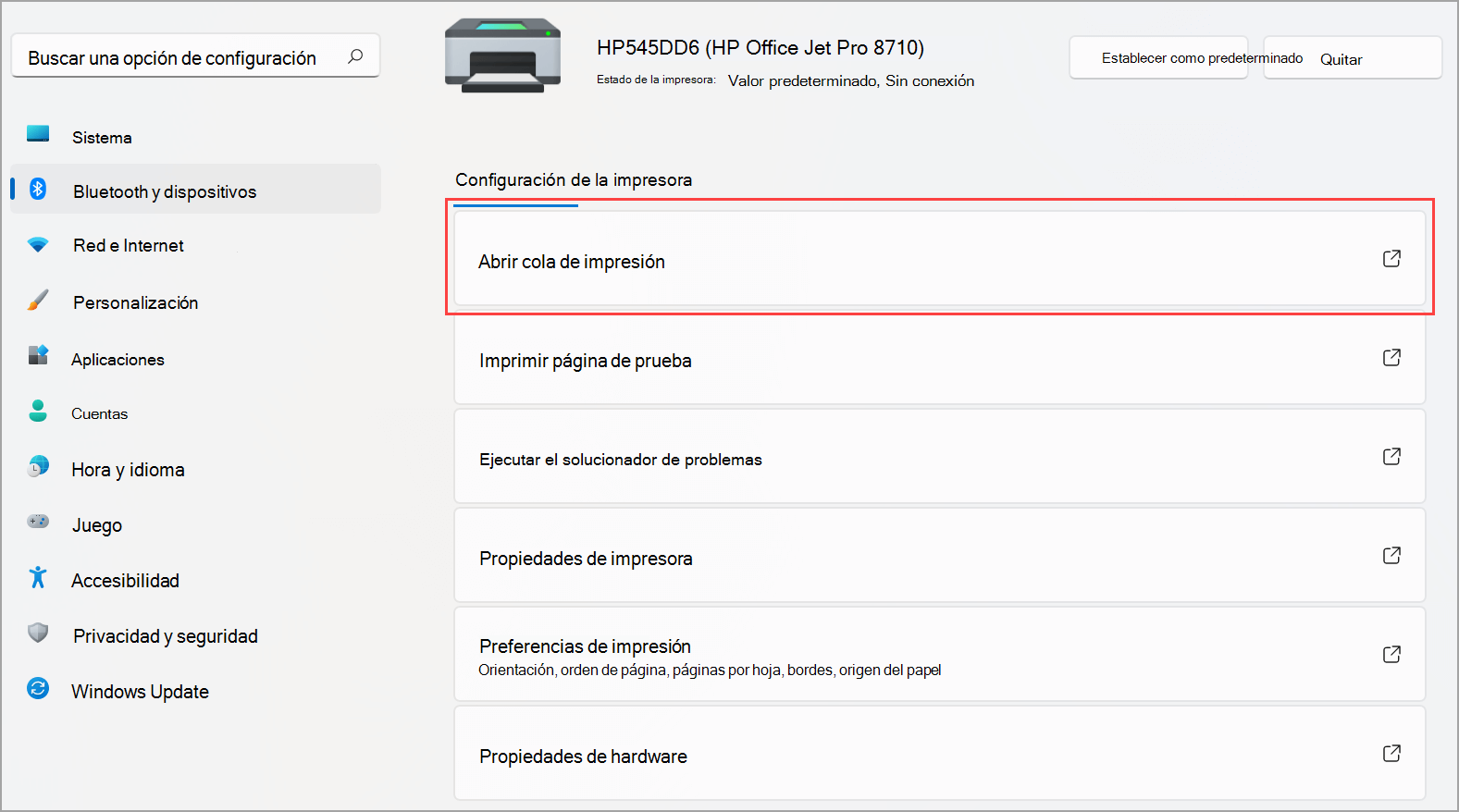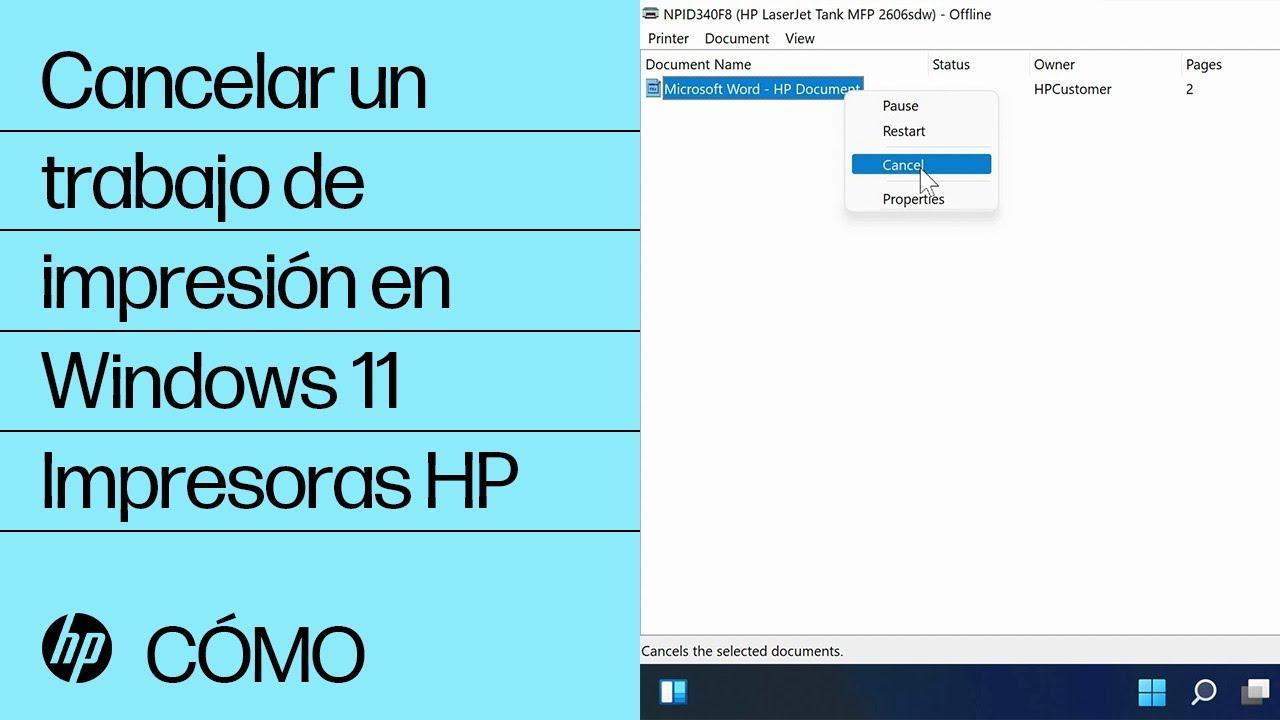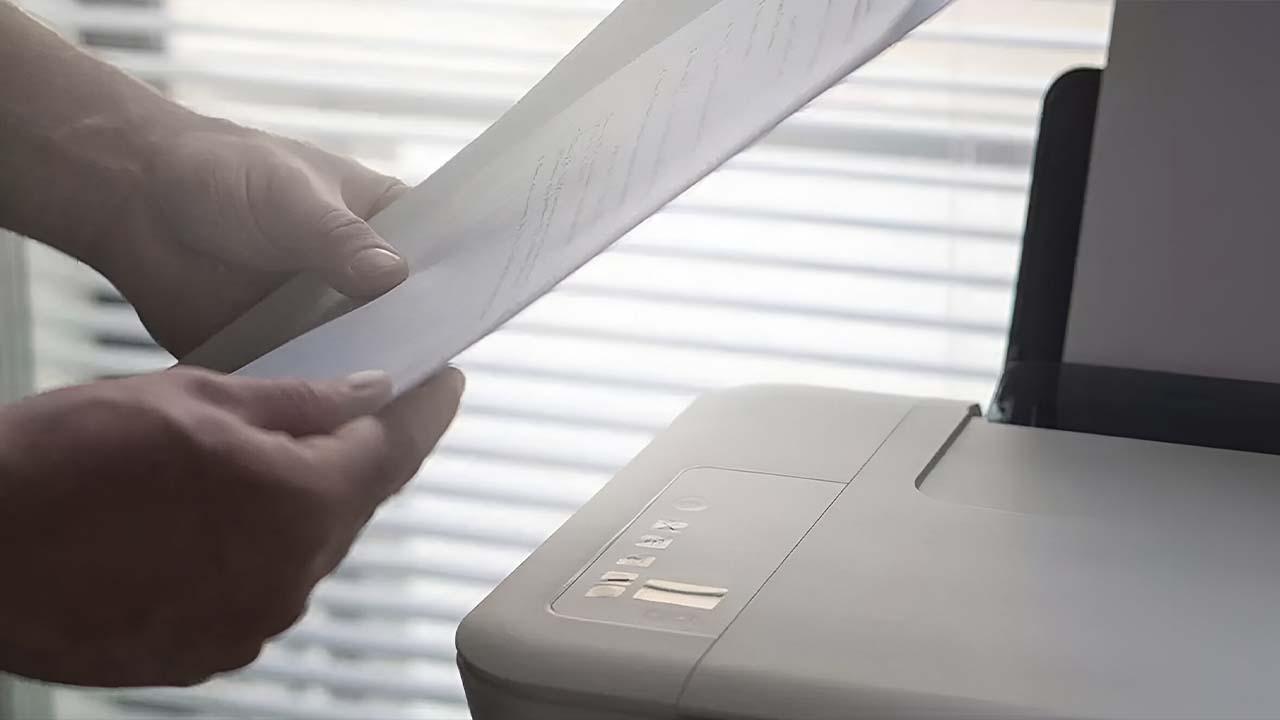- Understand what the print queue is and how it helps you manage jobs with priorities, pauses, and cancellations.
- Learn the route in Windows 11 to open the queue and use key options such as Properties and Keep Printed Documents.
- Activate the history in Event Viewer to audit print jobs and diagnose issues on shared computers.
- Resolves spooler locks with restarts, printer cleaning, and updates drivers and controlled reinstallation.

When you send something to print in WindowsThat document doesn't go "directly" to the printer: first it goes through a waiting list managed by the system. In that list, called the print queue, jobs are stacked, and you can see what's in progress, what's paused, or what's blocking everything. Knowing how to open and manage that queue in Windows 11 It saves you time and a lot of frustration when the printer decides not to cooperate.
Additionally, there are times when it's helpful to prioritize a document, pause another, or delete one you sent by mistake. That's what the queue window is for. From there, you can also see if something is stuck and fix it. In this practical and detailed guide You'll see how to open the print queue in Windows 11, manage jobs, activate a print history, and resolve typical print service locks.
What is the print queue and why is it important to monitor it?
The print queue is, in practice, a small database where Windows stores the jobs that arrive at the printer, managing them in order of entry (FIFO) unless you change priorities. From that list you can pause, resume, restart or cancel tasks and check if there is anything blocked that prevents printing the following.
Normally, when you send a print job, you'll see a printer icon in the notification area; from there you can open the print list. Alternatively, you can access it manually whenever you want. Controlling the queue is key when the printer is offline, out of ink, or experiencing a temporary error, and you want to reorder or stop jobs without deleting everything.
How to view the print queue in Windows 11
Opening the queue in Windows 11 is very simple from the Settings app. These are the steps to get to the window where the jobs appear that are pending printing:
- Right-click the Start button and enter Configuration > Bluetooth and devices > Printers & Scanners.
- Select the printer you are using and press the button. Open queue.
- A window will open with the printer name and, below it, the job list. If the list is emptyThere is nothing on hold.
You can also access it from the classic "Devices and Printers" panel, but in Windows 11 the most direct route is Settings. The Open Queue button It's the one that takes you to the panel where everything happens.

Manage jobs: pause, resume, restart, cancel, and view properties
Once in the queue window, you'll see each document with its status, owner, size, and date. Right-clicking on a job opens a menu with actions. These options allow you to take control without touching the printer.:
- Pause: Temporarily pauses a job. The option changes to Resume to continue later.
- Restart: restarts the printing from the beginning, useful if there has been a one-off failure.
- Cancel: eliminates the work from the queue, ideal if you selected the wrong file or no longer need it.
- Properties: opens detailed job information and settings tabs such as Presentation and Paper/Quality, very useful if you want to check how the document is being sent.
Additionally, you can select multiple jobs at once to apply a joint action (for example, cancel several at once). The Properties option It also allows you to adjust the priority of the work: the larger it is, the sooner it will be printed compared to others waiting.
If at any point you need to completely stop sending to the printer, you can temporarily pause all jobs from the queue window menu. This is useful in case of mechanical failures or if the printer runs out of paper. and you don't want any more shipments to pile up.
How to see what you've printed: Activate print history
If you need to keep track of what has been printed, Windows can save a history using the Event Viewer. Activating it takes just a minute. and then you can check which documents have been printed.
To enable PrintService registration: Use the Event Viewer with this route:
- Open the Events viewer from the search bar on the taskbar.
- Go to Application Logs: Microsoft > Windows > PrintService.
- In the Operation panel, right-click on Properties and brand Enable logYou can choose "Overwrite events if necessary" to keep it updated.
Once activated, you can access that same section of the Viewer whenever you want to check what has been printed. It is very useful for shared equipment or for keeping track of consumables when multiple users use the same printer.
Keep a copy of your work: “Keep printed documents”
Another way to keep track is to tell Windows to save the jobs once they are printed. This option is located in the advanced properties of the printer and allows the document to remain visible in the queue after printing.
- Opens Configuration > Bluetooth and devices > Printers & Scanners and enter your printer.
- From the queue, open the menu Printer > Properties.
- In the Advanced, Mark Preserve printed documents and confirm with Accept.
With this box checked, you can view completed jobs and, if necessary, reprint them without having to reopen the original document. It's a perfect option for workflows with many reprints. or internal validations.
When the queue gets stuck: common causes and quick solutions
However robust the system is, the print queue can get stuck. It's common for a job to appear as Cancelling and never finish, blocking the rest. Before you despair, try these staggered measures which usually resolve most issues:
1) Restart your PC
It seems like the same old thing, but it works. A full restart closes processes and clears the print service state, allowing it to start fresh. It's the fastest way to recover the tail when everything has frozen.
2) Restart the “Print Spooler” service
If you don't want to restart the computer, you can restart only the service that manages the queue. Access the Windows services manager and restart it:
- press Windows + R, writes services.msc and confirm.
- Search Print spoolerselect it and press Restart in the upper left panel.
This temporarily stops the service, erases its internal state, and restarts it. In many cases, after restarting the spooler The printer is now accepting jobs normally again.
3) Quick script to clear the queue
If you prefer to automate it, use a console with administrator privileges and run this sequence. Stop the spooler, clears temporary files from the queue and starts it again:
net stop spooler
Del "%SYSTEMROOT%\System32\spool\PRINTERS\*" /Q /F
net start spoolerIf you're interested, save those. commands in a .BAT file to have it on hand and run it with a double-click when the queue gets stuck. It's especially useful if you print often and need a quick response..
4) Manual deletion of the PRINTERS folder
Another option involves manually cleaning the files retained by the spooler. You must stop the printing service sooner., delete the files and restart it:
- Stop the Print spooler from services.msc or with
net stop spooler. - Navigate to C:\Windows\System32\spool\PRINTERS and delete all files (you will see names like FP00008 or FP00008.SHD).
- Start the service again with net start spooler or from the Services panel.
This eliminates any remaining obstacles to progress. If there was a corrupt job, it will disappear. and you'll be able to print again immediately.
5) Printer drivers and reinstallation
If the jam persists, it could be a driver issue (more common with network printers). Update or reinstall the drivers. Identify the missing drivers and update them. You can download the driver from the manufacturer's website or use Windows Update from the Device administratorand even third-party tools to keep them up to date.
Another alternative is to remove the printer and reinstall it from scratch. Remove device in Windows 11 it is like this:
- Go to Configuration > Bluetooth and devices > Printers & Scanners.
- Select the printer and press RemoveConfirm with Yes.
To reinstall it, make sure it is turned on and connected. Windows usually detects it when you click "Add device" In Printers & Scanners. If it doesn't appear, choose Add manually.
6) Manually add a local or network printer
If the automatic assistant cannot find it, it resorts to manual configuration. The assistant itself offers you different ways to search for the printerIf it is connected locally, use the local or network printer option with manual configuration:
- Choose Use an existing port and select the correct port (USB, LPT or COM).
- For the controller, press I have a disk If you have it; if not, use Windows Update to expand the list of models.
- Select manufacturer and model and press Next.
- Assign a name of your choice and confirm with Next.
- Decide whether share the printer online or not, and it continues.
- Usa Print a test page to verify that everything is working and ends with Finish.
This will get your printer up and running, with the correct driver and a clean queue. If the problem was an inadequate or corrupted driverIt will be resolved.
7) The case of Adobe PDF and drag and drop
Some users relied on the Adobe PDF queue to drag and drop hundreds of documents, converting them faster than the application itself. This feature may not be available in recent versions. If something similar suddenly fails on youCleaning the queue and checking drivers is usually the first step in restoring spooler stability.
8) Remove problematic queues from the Registry (advanced)
If you can't remove a stuck queue through normal means, you can delete it from the Registry. However, this is an advanced method that should be used with caution. Modifying the Registry can cause system problems If you accidentally delete passwords, do so only if you feel comfortable doing so, and preferably with a backup.
- Open Run, type command and confirm, then type regedit and press Enter.
- Navigate to Team > HKEY_CURRENT_USER > Printers > Connections.
- Remove only the affected printer queueDon't delete anything else.
After that, restart the printing service or the computer and reinstall the printer if necessary. This “in-depth” method It is useful when neither cleaning the PRINTERS folder nor restarting the spooler fixes the situation.
9) Windows Troubleshooter
Windows includes wizards that detect and correct common printing errors. In Windows 11/10 you can open the "Use a printer" troubleshooter from the classic Control Panel:
- Search troubleshooting or “Troubleshooting” in the search engine.
- Opens Troubleshooting Settings (Troubleshooting settings) or the Control Panel.
- En Hardware and sound, run Use a printer.
- press Advanced and then Run as administrator.
- Choose Next and apply the suggested corrections.
If you're still working with Windows 8/8.1 or Windows 7The equivalent assistant is located in the Control Panel, under Troubleshooting > Hardware and Sound > Use a printer. Run it as administrator It increases the likelihood that it will repair permissions and services.
When is it advisable to reinstall everything from scratch?
If after cleaning the PRINTERS folder, restarting the spooler, running the troubleshooter and updating drivers, the queue is still in a loop, the sensible thing to do is reinstall the printer. Remove the device from SettingsRestart your computer and add it again, preferably using the manufacturer's driver.
In shared environments or with network printers, make sure you have permission to install them or that the device is visible on the network. The Add manually option It will allow you to specify the printer by address or by port, as appropriate.
Best practices to avoid blockages
Although traffic jams are inevitable from time to time, there are habits that help. Do not cancel a job just as the printer starts printingWait a few seconds or pause first. Keep your drivers up to date, check your supplies, and connect your printer to a stable power outlet.
If you share a printer with other people, turn on the Event Viewer history or select "Keep printed documents" to find out what happened. This makes it easier to detect patterns. if it always gets blocked with certain file formats or sizes.
Mastering the print queue makes all the difference between wasting time struggling with your printer and solving the problem in two clicks. You've seen how to open it in Windows 11, manage print jobs, keep a record, and, most importantly, unblock it when it's stuck "thinking." By restarting the service, cleaning the printers, reinstalling the printer, and using the troubleshooter You'll have virtually all the usual scenarios covered.
Passionate writer about the world of bytes and technology in general. I love sharing my knowledge through writing, and that's what I'll do on this blog, show you all the most interesting things about gadgets, software, hardware, tech trends, and more. My goal is to help you navigate the digital world in a simple and entertaining way.
